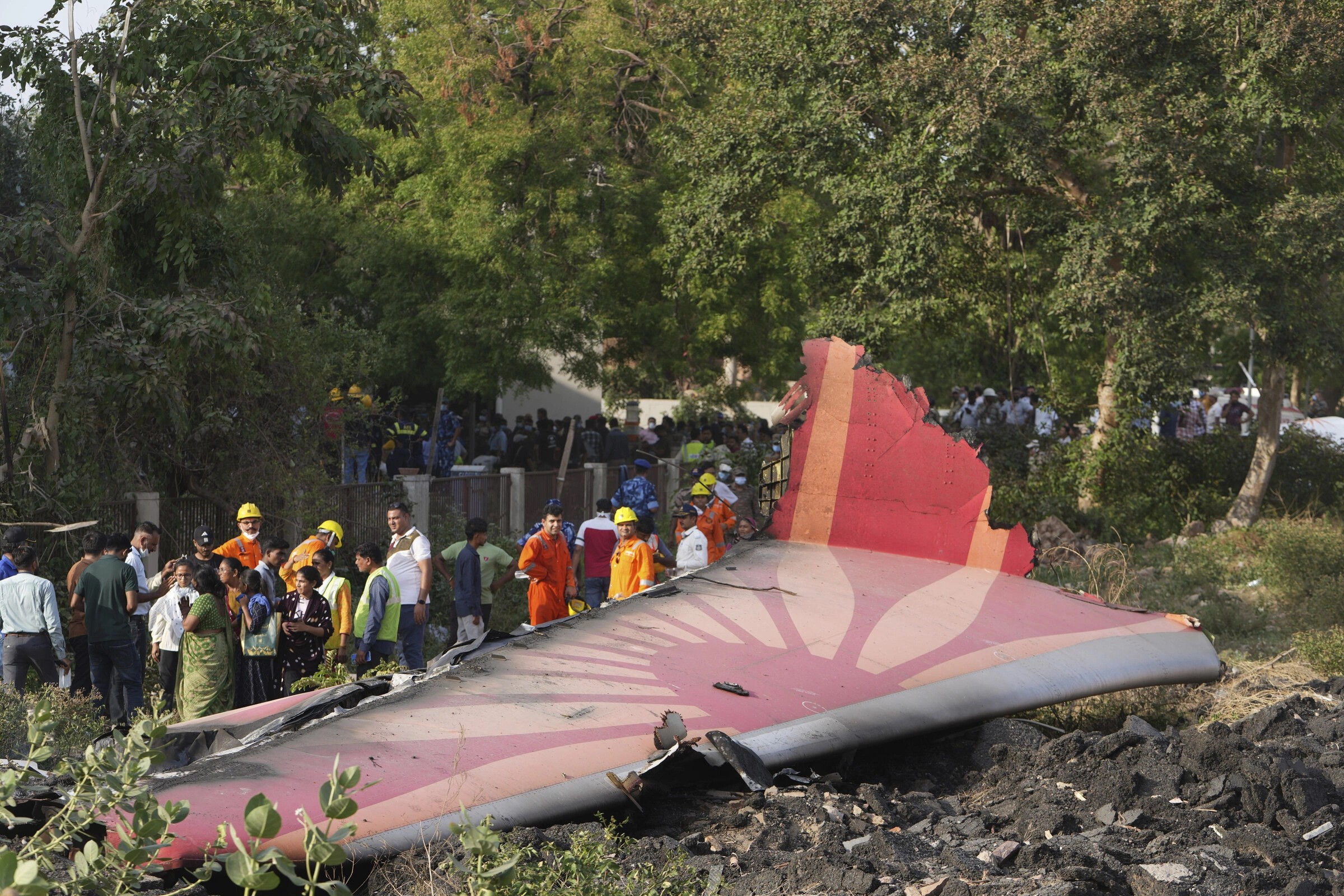The Air Accidents Investigation Bureau (AAIB) of India released the preliminary findings of its investigation into the June 12 Air India Boeing 787 crash on July 11. The report indicates that the fuel control switches to both engines were moved from the "run" to the "off" position, one second apart, before the aircraft lost speed.
"In the cockpit voice recording, one of the pilots asked why the other had cut off the fuel. The other pilot responded that he had not done so," the report stated.
The aircraft rapidly lost altitude. The fuel switches were then turned back on, and the engines restarted, but one pilot issued a mayday signal. After asking the crew what had happened, air traffic control observed the plane crash and dispatched emergency responders.
 |
Debris from the tail section of the Air India plane at the crash site in Ahmedabad, Gujarat, India on 12/6. Photo: AP |
Debris from the tail section of the Air India plane at the crash site in Ahmedabad, Gujarat, India on 12/6. Photo: AP
The AAIB stated it will not issue any recommendations to airlines, Boeing, or the engine manufacturer, General Electric, suggesting the incident was not due to a technical fault with the aircraft or engines.
The agency confirmed the investigation is ongoing and has requested further information and evidence from involved parties.
Air India flight AI171 crashed seconds after takeoff from Ahmedabad airport in Gujarat on the afternoon of 12/6, plummeting into a medical school dormitory nearby. The plane carried 230 passengers, including 169 Indian citizens, 53 Britons, 7 Portuguese, and 1 Canadian, along with 12 crew members.
The crash resulted in 260 deaths, including 241 on board and 19 on the ground. Only one British passenger survived. Dozens of people on the ground were also injured.
Air India stated the Boeing 787 was well-maintained and had no issues before the accident. This marks the first fatal crash involving this aircraft type since it entered commercial service in 2011.
Pham Giang (AFP)












